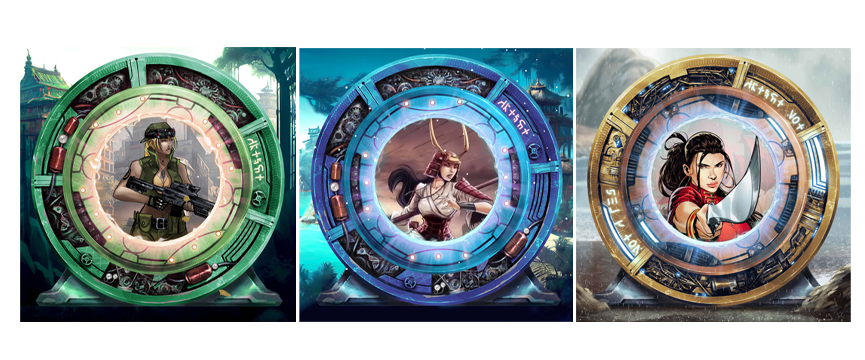The Birth of Interactive Comic Books, Entry of Cosmetic Brands in Web3, The Rise of Super Apps, and more
Listen to Blockchain Brief Podcast Episode: The Birth of Interactive Comic Books, Entry of Cosmetic Brands in Web3, The Rise of Super Apps, and more
World’s First Interactive Comic Book
Utilizing the power of modern technology, comic books have made an innovative leap into a new era since their inception in the 1930s. These beloved stories and characters have captivated fans worldwide with thrilling adventures and enthralling storylines. Drawing from my findings, last year alone saw a global market value estimated at over 15 billion USD, clearly illustrating its lasting popularity among readers of all ages. Recently, however, this traditional industry has embraced its digital potential through exciting collaborations between hero comics and Non-Fungible Tokens (NFTs), offering unique opportunities for creative expression to those invested in or looking for something special within the world of collectibles.
Last week, a revolutionary comic book captivated readers with its novel use of blockchain technology. It features NFT Easter eggs hidden within its pages—available by either minting this specific edition or buying from other players on OpenSea. These rare rewards can then be used in-game to unlock immersive content and have proven popular among readers due to their innovative approach. In my opinion, this marks an exciting advancement for digital entertainment, as it stands to transform how we engage with stories moving forward, suggesting that successful strategic planning behind Web3 and Metaverse technologies over recent years led up to such advancements being possible today.

The developers of this interactive comic book have also taken an innovative approach to selling their NFT comics. Ownership guarantees discounted prices on new issues and even free versions of select titles; I see this as an effective way to create an attractive Web3 portal for collectors around the world. Furthermore, these comic books take advantage of the unique feature called “Forging.” This technology reduces available supply by allowing owners to digitally burn three lower-tier comics in exchange for minting one rarer tier, offering unprecedented opportunities within the NFT comic book space.
With both comic books and non-fungible tokens displaying enduring strength in the digital age, I am confident that further developments will continue to be made as more features are added, offering ever more compelling investment opportunities for avid collectors.
Revamping the Cyberworld
As Web3 technology advances, businesses are recognizing the great potential it holds for their future growth. Its smart contracts and decentralized data storage offer a realm of possibilities, allowing organizations to unlock new levels of digital transformation like never before—overcoming challenges such as scalability and development difficulties along the way.
I expect different industries to continue to respond to this inevitable force with investments in an effort to access its many advantages. Among them is Beauty and Cosmetics—an industry poised on revamping their tools with innovative offerings of Web3 technology. My research suggests their goal is to develop streamlined user experiences which will attract tech novices in addition to those already familiar with this amazing 3D environment. In my opinion, this could help provide an accessible foundation for all individuals looking to build up their digital presence through the powerful capabilities of web-based platforms like Web3. Furthermore, the beauty industry is on a mission to make even more stunning 3D interfaces. By doing so, they will be able to redefine the widely controversial concept of ‘beauty’, bringing an objective interpretation that has long been sought after.

The cosmetics industry is also looking to redefine personalization with the development of sophisticated avatars and virtual store customization tools. Businesses would have the ability to create digital stores tailored to their customers’ needs; meanwhile, users would be able to design distinct avatars adorned in brands’ products. This revolutionary technology has massive potential for driving success within the NFT marketplaces. It would allow enterprises to heighten customer engagement through meaningful, individualized experiences that can potentially bring us one step closer to true personalized identities online.
I truly believe that we are now entering an age where virtual reality and other digital technologies have opened up a world of possibilities for organizations looking to redefine aesthetic standards and marketing strategies. These advancements promise a future that will shape how we view ourselves online—one defined by creativity, diversity, innovation, and ingenuity!
Super Apps - The Next Big Thing
Digital applications are now essential components of our everyday lives; I even believe there is an app for almost anything one could desire. Whether you need a ride home, some food delivered to your door, or the chance to socialize with friends—all can be accomplished through just a few taps on your phone screen! Millions of apps exist today and it’s no surprise why: they provide convenience and ease of access like never before.
With countless applications available, there is one main obstacle to bear in mind: the restricted storage capacity of electronic devices such as phones and laptops. If you want to download more apps, you will inevitably have to delete some of your existing ones for them to fit. This can become a challenge when trying to manage all these different programs. Furthermore, the need for several applications can be confusing and overwhelming, especially for those of an older age. As a result, super-apps have been developed to simplify life’s complexities. A super app is an application that takes its primary features and combines them with a wide range of other services which the user would normally need or want to use, creating a comprehensive, one-stop experience. For some time now, these apps have been available for people to use. I believe that countries such as China, Indonesia, and Thailand have jump-started their digital economies by leveraging the power of these super apps; they offer a host of services, such as payment processing, shopping assistance, medical appointment booking, and food ordering—to name a few.
It is predicted that more advanced super apps will soon be created, and I am certain many of them will adopt Web3 technology due to recent developments regarding crypto regulations. With Web3 integration, users are now able to take full ownership of their data, giving them a newfound level of privacy and control that was previously impossible. The benefits made possible by this major advancement in technology will have far-reaching implications for the future. Furthermore, these super apps could usher in a new wave of financial inclusion, connecting users with cryptocurrency and granting access to those without bank accounts or who have been historically disadvantaged. This is driving us towards an era where crypto-based payments can be available for everyone.
I believe our world is rapidly transforming into a more convenient and efficient place, thanks to the inventions of super apps. From mundane everyday tasks to more complex activities, this key technology is paving the way for an easier existence!
Blockchain Plans? .
Every moment you are not already there, you are losing time and money. We help you Speed to Scale – and in Blockchain, scale is everything.
Artificial Intelligence will Shape the Future of Jobs
Year after year, job application processes tend to remain stagnant in their assessment of candidates. Although the educational background and work experience do play an important role when it comes to deciding the right fit for a position within companies, there are other elements – such as skills, abilities, and interests – that should not be discounted; yet too often they fall by the wayside. However, with new technologies changing how people interact with the workplace entirely, I think that being agile enough to adopt a more comprehensive approach centering around skill-based evaluation can make all the difference between success or stagnation down the line. This approach not only allows employers to hire competent staff but also encourages them to stay with and develop within their positions—ultimately leading to greater rewards for both employer and employee. AI and ML tools offer an invaluable resource in this pursuit of adopting such an investment strategy that ensures long-term growth potential.
By harnessing the power of machine learning and artificial intelligence, companies could potentially unlock a range of possibilities to make more informed hiring decisions. Not only can they review external candidates quickly and accurately, but they can also find untapped potential among their current staff. In my opinion, this approach opens up new avenues for internal mobility, providing employees with unique skills and access to different career paths that best match their abilities; while simultaneously allowing businesses the opportunity to diversify their talent pool. What’s more, AI offers staff valuable guidance when it comes to honing existing talents or pursuing promising opportunities within other departments – all powered by data-driven insights!
Given the numerous advantages of AI, we must ensure that its utilization is done in an ethical manner. Without proper standards to regulate the use and prevent potential data bias, companies risk facing long-term consequences from implementing Artificial Intelligence technology. As we continue transitioning into a skills-based economy and recognize the potential of artificial intelligence and machine learning, standards will be outlined, granting organizations an opportunity to maximize the technology’s positive aspects while providing employees with additional job opportunities and aiding their individual growth simultaneously. By leveraging AI/ML capabilities into their operations, companies will be well prepared for whatever comes next in this modern age.
Machine Learning-Triggered Reminders Improve End-of-Life Cancer Care
Clinicians face a difficult challenge when it comes to discussing care plans with patients. It is essential for them to identify the patient’s goals before the illness progresses too far, as each individual may approach end-of-life treatments differently. To ensure that conversations start early enough and clinicians are equipped with the necessary information, researchers have developed an innovative tool that predicts six-month mortality rates while providing “nudges” to clinicians, encouraging them to initiate the needed conversation with their patients.
Leveraging the power of machine learning, an innovative algorithm was developed to identify high-risk cancer patients so that they could receive timely care. Doctors were also sent “nudges” via emails and text messages over a 16-week period as reminders for them to discuss necessary care plans with their patients if needed. As a result, there was a marked increase in Doctors discussing life-saving treatment options with those facing a cancer diagnosis – prompting more informed decisions on patient health outcomes than ever before.

Despite the surge in the number of conversations initiated between medical professionals and patients, this technology still has much more potential. In particular, findings suggest that only half of the high-risk individuals are having these critically beneficial discussions with practitioners regarding their care plans. I believe that there could be multiple explanations as to why – reluctance on the part of healthcare providers or fear within patients themselves to have such dialogues about mortality. Nevertheless, it is clear that these conversations must take place if we hope to broaden understanding among both parties while ensuring well-rounded treatment protocols are employed, as needed, by those most acutely at risk.
Researchers are looking to implement AI technology into the existing tool. The algorithm will be designed to recognize patients who need early palliative care and will be trained to teach them about the significance of discussing their plans with medical professionals. Although this breakthrough still has its challenges ahead, I think that it certainly holds great promise for improving the quality of life worldwide.
You may also like